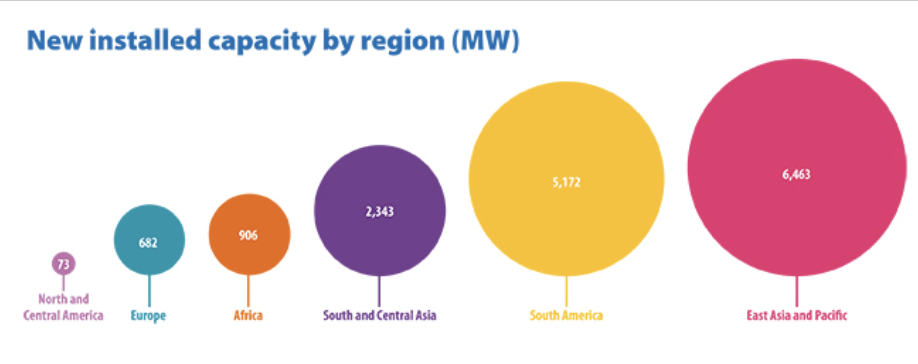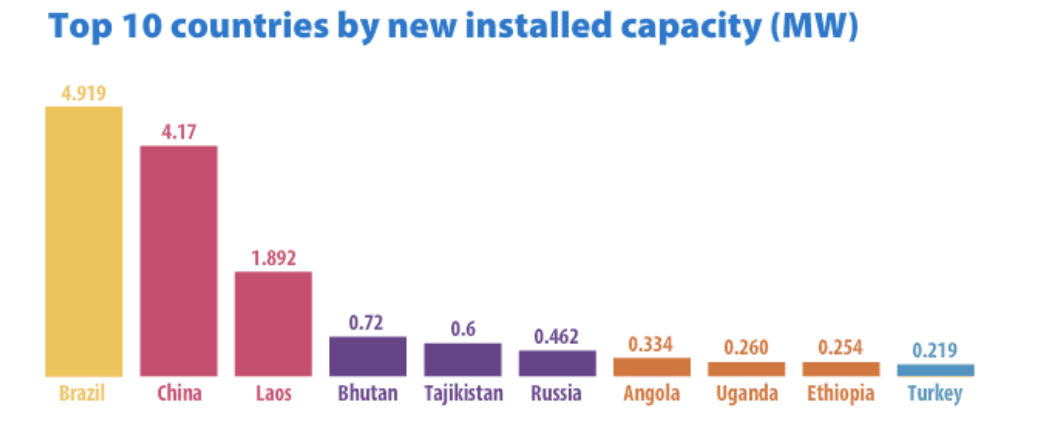
The Covid-19 pandemic has underlined hydropower’s resilience and critical role in delivering clean, reliable and affordable energy, especially in times of crisis, two new reports from the International Hydropower Association (IHA) suggest.
The 2020 Hydropower Status Report presents the latest worldwide installed capacity and generation data, and showcases the sector’s contribution to global carbon reduction efforts.
Published alongside this is a Covid-19 policy paper which features recommendations for governments, financial institutions and industry to respond to the current health and economic crisis.
2020 Hydropower Status Report
In its seventh edition, the Hydropower Status Report shows electricity generation hit a record 4306 terawatt hours (TWh) in 2019, the single greatest contribution from a renewable energy source in history.
The annual rise of 2.5% (106 TWh) in hydroelectric generation – equivalent to the entire electricity consumption of Pakistan – helped to avoid an estimated additional 80-100 million metric tonnes of greenhouse gases being emitted last year.
The report highlights that Global hydropower installed capacity reached 1308 gigawatts (GW) in 2019, as 50 countries completed greenfield and upgrade projects, including pumped storage.
However, the installed capacity added in 2019 was down on the number recorded in 2018. A total of 15.6GW was added compared to the previous year’s 21.8GW. This represents a rise of 1.2%, which is below the estimated 2% growth rate required for the world to meet Paris Agreement carbon reduction targets.

The countries with the highest increases in the world were Brazil (4.92GW), China (4.17GW) and Laos (1.89GW). The new installed capacity by region was: 6463MW in East Asia and the Pacific; 5172MW in South America; 2343MW in South and Central Asia; 906MW in Africa; 682MW in Europe; and 73MW in North and Central America.
It was noted that India has overtaken Japan as the fifth-largest world hydropower producer with its total installed capacity now standing at more than 50GW. India’s hydropower sector was heralded in April for restoring electricity to tens of millions of households following a huge plunge in demand in what is perhaps the largest electricity experiment the world has ever seen.
Hydropower offers flexible operations
The report points out that hydropower’s flexibility services have been in high demand during the Covid-19 crisis, with plant operations less affected due to the degree of automation in modern facilities.
Hydropower developments have, however, not been immune to economic impacts, with the industry facing widespread uncertainty and liquidity shortages which have put financing and refinancing of some projects at risk.

Impacts of Covid-19 on hydropower
In a companion policy paper to the Status Report, IHA sets out the immediate impacts of the Covid-19 crisis on the sector as well as recommendations to assist governments and financial institutions and enhance hydropower’s contribution to the recovery.
Recommendations in the paper include increasing the ambition of renewable energy and climate change targets which incorporate the role of sustainable hydropower development.
It also suggests supporting sustainable hydropower through the introduction of appropriate financial measures such as tax incentives to ensure viable and shovel-ready projects can commence.

Other recommendations include fast-tracking planning approvals to ensure the development and modernisation of hydropower projects can commence as soon as possible, and safeguarding investment by extending deadlines for concession agreements and other awarded projects.
Given the increasing need for long-duration energy storage such as pumped storage, the paper suggests hydropower developers should work with regulators and system operators to develop appropriate compensation mechanisms for hydropower’s flexibility services.
“Preventing an emergency is far better than responding to one,” said Roger Gill, President of IHA, highlighting the need to incentivise investments in renewable infrastructure.
He added: “The events of the past few months must be a catalyst for stronger climate action, including greater development of sustainable hydropower.”


